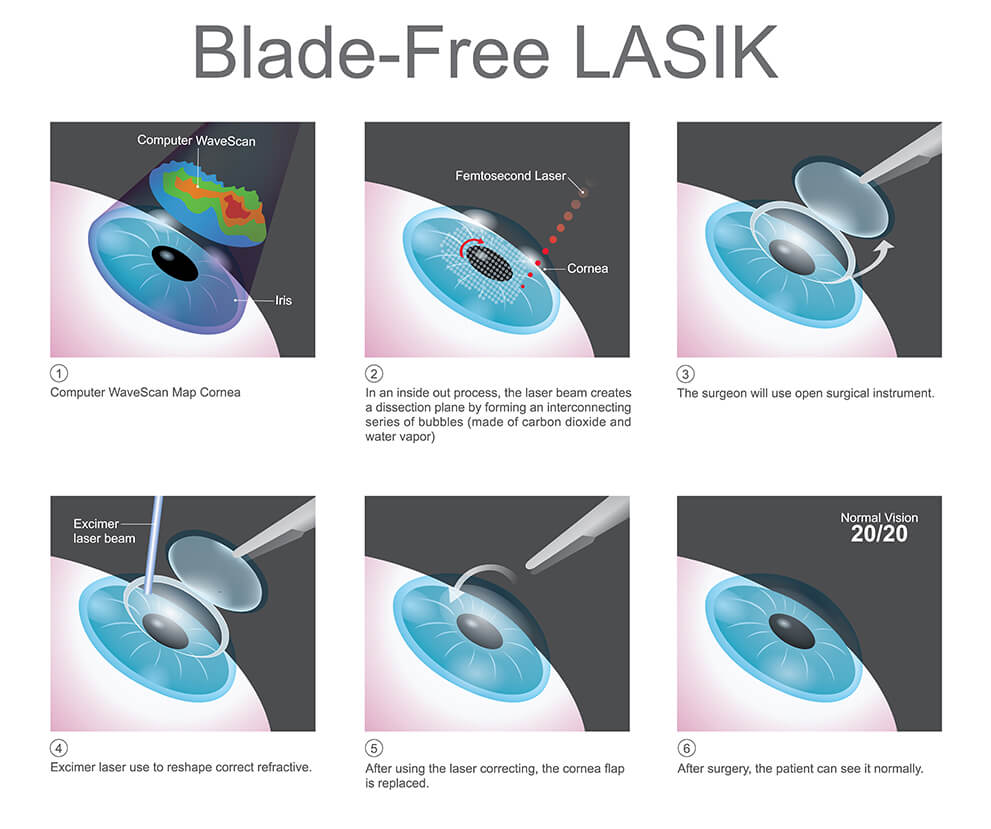What is LASIK surgery?

LASIK stands for laser-assisted in situ keratomileusis. “In situ keratomileusis” is medical terminology that more or less translates to “sculpting the cornea.” Reshaping the cornea with laser technology results in the correction of refractive errors such as nearsightedness, farsightedness, and astigmatism.
How does LASIK work?
During LASIK, an advanced laser is used to sculpt the cornea into a shape that corrects for the refractive error. The cornea can then refract light properly, thus eliminating the need for glasses or contacts.
The cornea is the front part of the eye where light enters and bends (refracts) to the back of the eye, where visual signals are sent to the brain. If the cornea is slightly elongated or short, light refracts in such a way that it does it not reach the back of the eye. This results in a refractive error such as nearsightedness, farsightedness, or astigmatism, which cause blurry vision at varying distances.
LASIK in Honolulu and Kahului
LASIK surgery is essentially painless and extremely fast — it only takes 15-20 minutes to perform the entire procedure. Before surgery, your surgeon will administer numbing eye drops to prevent any pain. A femtosecond laser is then used to make a micro-thin flap on the surface of the cornea. This flap is later used as a natural bandage to promote fast and comfortable recovery.
After the flap is created, it is lifted to expose the underlying corneal tissue. Your surgeon will then use an excimer laser to reshape the cornea in accordance with your prescription. While many patients feel a slight pressure when the flap is created, most don’t feel any sensation at all during the reshaping process.
Once the cornea is reshaped, the surgeon replaces the flap. It doesn’t need to be stitched into place as it naturally fuses back to the cornea over time.

What are the side effects of LASIK surgery?
The most common side effects of LASIK only last a couple of days.
These effects include:
- Soreness
- Itchiness
- Inflammation
- Dry Eye
These effects usually appear right after surgery once the numbing eye drops wear off. They can be mitigated by using prescribed eye drops after surgery. Your surgeon may also recommend using artificial tears and mild over-the-counter painkillers.
For the most part, the discomfort following LASIK only lasts a couple days. If they last longer than that, it may be an indication of a complication, so you should contact your surgeon if you experience prolonged discomfort.
What are the risks of LASIK surgery?
Dry eyes after LASIK can be quite common, but the condition is easily treatable with artificial tears or prescription medication. Poor night vision and light sensitivity are also common after LASIK, but most often go away within several weeks. Serious complications are extremely rare — according to the American Refractive Surgery Council, less than 1% of patients experience severe complications as a result of LASIK surgery.
Will I have perfect vision after LASIK?

There’s no way to guarantee that every patient who has LASIK achieves 20/20 vision. The vast majority of patients, however, do achieve 20/20 vision or better after LASIK. You can even maximize your chances of achieving perfect vision by opting for a custom LASIK procedure.
Custom LASIK uses 3D imaging to measure your prescription within .01 diopters, which makes the surgery much more precise. Patients who have custom LASIK almost always end up with at least 20/20 vision.
It’s important to recognize the limitations of surgery before deciding to undergo LASIK — perfect vision is never a guarantee. It can also take time to see the full results of laser vision correction. While most patients see an improvement to their vision immediately after surgery, your best vision will take a couple months of healing to achieve.
Am I a candidate for LASIK?
Most people qualify for LASIK surgery.
There are, however, a few requirements for being a good candidate for LASIK:
- You must be in good health
- You must be at least 21 years old
- You must hold a stable prescription for at least a year (although some surgeons prefer two years)
- Your prescription cannot exceed -11.00 diopters of nearsightedness, +5.00 diopters of farsightedness, and 5.00 diopters of astigmatism
- You must have a sufficiently thick cornea for the safe removal of tissue
If you do not meet the general requirements for LASIK, alternative procedures are available to reduce or eliminate your dependence on glasses and contacts. Your doctor will discuss your options for vision correction based on your overall health, medical history, lifestyle, and unique prescription.



The holiday season is full of sparkle—but a few festive favorites can put your eyes at risk. 1. Champagne Corks 🥂 Celebratory toasts can turn dangerous fast. A champagne cork can launch up to 50 mph, causing serious eye injuries. 2. Sharp Tree Branches & Pine Needles 🎄
Decorating the tree often means leaning in close—and those stiff branches can scratch the eye’s surface, leading to painful corneal abrasions. 3. Flying Toys & Projectiles 🎯
Nerf guns, darts, drones, and remote-control gadgets are holiday favorites—but also common causes of eye injuries in ERs every December. 4. Glitter, Craft Supplies & DIY Décor ✨
Holiday crafts are fun, but glitter, adhesives, and decorative sprays can irritate the eyes or cause chemical injuries. 5. Dry Winter Air & Holiday Travel ✈️❄️
Heaters, cold air, and long flights can leave eyes dry, red, and irritated—especially for contact lens wearers.
Take care of your eyes this season! ... See MoreSee Less
0 CommentsComment on Facebook
We appreciate our teams and our highly trained doctors who are available to see patients quickly for urgent needs. Your eyes are precious, we are here to help!
#TestimonialTuesday ... See MoreSee Less
0 CommentsComment on Facebook
Hau'oli Lā Ho'omaika'i! ... See MoreSee Less
0 CommentsComment on Facebook
Mahalo to our community and our patients for making our offices across the islands feel more like an o'hana. ... See MoreSee Less
0 CommentsComment on Facebook
We use state-of-the-art retinal imaging and OCT technology to catch even the smallest changes in your eye health—often before symptoms appear. Because your sight deserves precision. Eye Center of Hawaii is your place for your retina care! ... See MoreSee Less
0 CommentsComment on Facebook
Healthy can be delicious! 🎃 Try this eye-friendly pumpkin mousse that’s packed with nutrients to support your vision while satisfying your sweet tooth.
Let us know if you give it a try, we’d love to hear what you think! 👇 ... See MoreSee Less
0 CommentsComment on Facebook